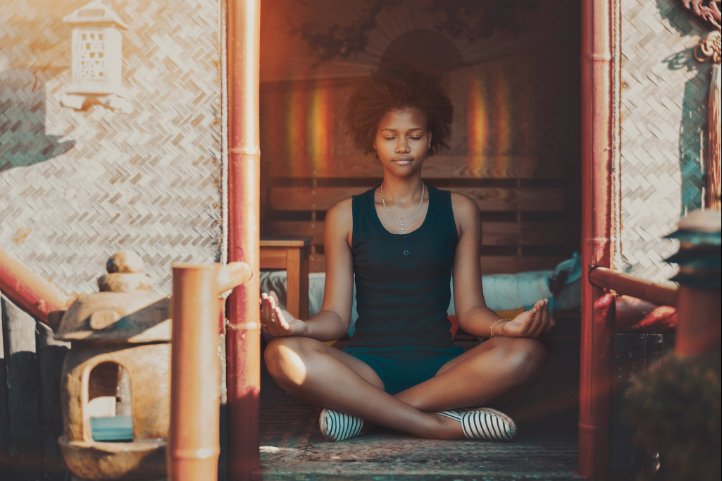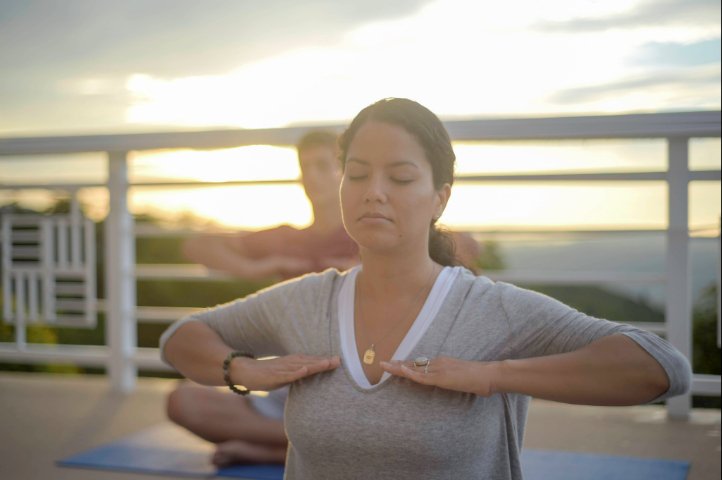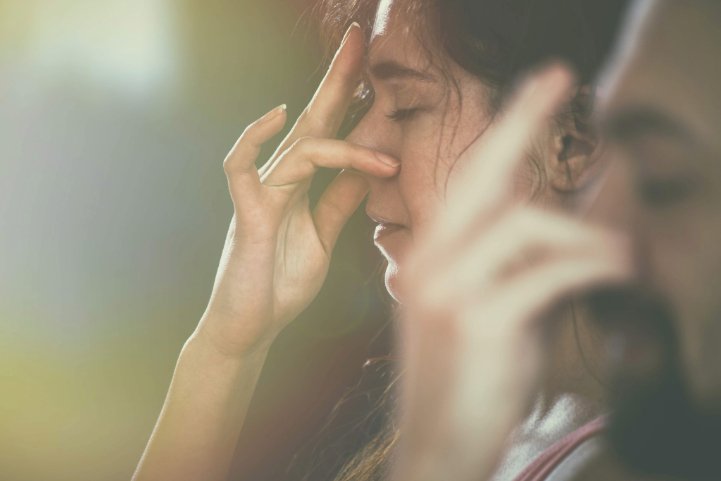
Breathing Exercises
Discover effective breathing techniques to enhance relaxation and focus. Discover simple techniques to increase your mental clarity and calmness. Read on!
Most breathing techniques take just a few minutes to give you powerful results. Many of us breathe with short, shallow breaths into our chest. This pattern can trigger anxiety and drain our energy.
Research shows that regular deep breathing exercises can help you relax and curb tension. These exercises work by naturally lowering your heart rate while increasing oxygen flow to your brain and lungs. Just 5 to 10 minutes of practice, three to four times daily, can significantly boost your mental well-being.
Breathing happens automatically, but conscious breathing is a distinct skill that can provide relief from life’s pressures. This piece explores simple yet powerful breathing techniques that help you find instant calm, boost your energy, and sharpen your focus.
Starting with simple deep breathing and moving to specialized methods like alternate nostril breathing (which can lower stress levels with 30 minutes of daily practice), we’ll guide you through each technique step by step. Let’s take a deep breath and begin this journey together.

Deep breathing mastery should precede the learning of advanced breathing techniques. Deep breathing is the foundation of all other breathing practices and gives you immediate benefits.
Deep breathing, also called diaphragmatic breathing or belly breathing, comes naturally to us when we’re young. Your diaphragm—a dome-shaped muscle below your lungs—helps you draw air fully into your lungs, unlike shallow chest breathing.
Your diaphragm contracts and moves down when you breathe deeply. This creates more space in your chest cavity, allowing your lungs to expand fully. This is the quickest way to breathe that helps your body exchange incoming oxygen for outgoing carbon dioxide effectively.
Deep breathing offers remarkable health benefits. It triggers your relaxation response, which lowers your heart rate and can stabilize blood pressure. Your vagus nerve, which runs from your head through your chest to your colon, gets stimulated, creating a calming effect throughout your body.
You’ll need practice to master belly breathing, especially if chest breathing has become your habit. Here’s how to become skilled at the technique:
Many of us pick up bad breathing habits over time. Watch out for these common issues:
These deep breathing basics are the foundations of advanced techniques, including the Art of Living’s teachings. Their pranayama exercises, such as three-stage breathing and Nadi Shodhana, build on this core skill to enhance mental clarity and emotional balance.
Mastering deep breathing prepares you well for the specialized breathing techniques we’ll explore later.

You’ve got the basics down, so let’s explore some specialized breathing techniques. These pranayama practices can help address specific needs, such as calming anxiety, improving focus, or increasing energy.
Box breathing, also known as square breathing, is a powerful technique that quickly restores your breathing to a balanced rhythm. Navy SEALs use this method in high-stress situations, which makes it perfect when you need to regain control.
To practice box breathing:
This technique activates your parasympathetic nervous system, lowering your heart rate and reducing stress hormones. People who practice regularly often see improvements in their mood and find it easier to manage anxiety and depression.
Dr. Andrew Weil popularized this technique, although it has roots in ancient yogic practices. It works like a “natural tranquilizer for the nervous system”.
How to perform 4-7-8 breathing:
Your body responds to this technique by relaxing, and your parasympathetic nervous system kicks in. Research shows it helps reduce test anxiety in students and lowers anxiety levels in senior citizens.
Nadi Shodhana, its Sanskrit name, involves breathing through one nostril at a time. The Art of Living includes this as one of their core pranayama practices.
To practice:
People who practiced for 12 weeks reported less stress. Research also shows this technique can improve cardiorespiratory function and help maintain respiratory endurance.
Sama Vritti means “equal mental fluctuations” in Sanskrit. This technique focuses on matching the length of your inhales and exhales, which helps balance the energy flow through your body’s channels.
Steps for Equal Breathing:
Just 5 minutes of practice can help you feel calmer. Equal breathing slows your heart rate, calms your mind, and can improve oxygen flow to your brain and lungs.
Lion’s Breath (Simhasana) helps release tension in your face, jaw, and throat. It works great after a stressful day.
To perform Lion’s Breath:
This energizing technique opens up your throat and upper chest. Singers and people with speech impediments often find it helpful. It also helps release negative energy and opens the throat chakra, which improves mental and physical flow.
Note that these techniques are most effective with regular practice. Add them to your daily routine and you’ll soon feel their calming effects.

Mental focus takes your breathing practice to a whole new level. Simple breathing becomes a powerful emotional tool when you add visualization and specific focus elements.
Your breath creates a deeper mind-body connection when paired with meaningful words. Pick a calming word or phrase that strikes a chord with you personally. Words like “safe,” “calm,” or “peace” work well for most people.
The technique works like this:
You can also match affirmations to your breath rhythm. This creates a peaceful focus that works well during stressful moments at work or while waiting in line—the secret lies in matching your chosen word or phrase with your breathing pattern.
Your imagination can create a mental sanctuary through guided imagery. This method helps you replace troubling thoughts with positive mental pictures that involve all your senses.
Here’s how to visualize effectively:
Studies support the effectiveness of guided imagery. Research showed that 20 minutes of guided imagery reduced anxiety and cortisol levels significantly.
Focused breathing offers quick relief at the time anxiety hits. Breath focus methods blend deep breathing with imagery and focus words that help you relax.
Begin with 10-minute sessions and work up to at least 20 minutes. Put one hand below your belly button to check proper breathing. Picture peace and calm flowing through your body while thinking “Inhaling peace and calm” as you breathe in. See tension and anxiety washing away while thinking “Exhaling tension and anxiety” as you breathe out.
These portable methods can be used anywhere—at home, in the office, or even while driving. They help lower your heart rate during stress. Professional help might be needed for ongoing anxiety issues.
A comprehensive approach to stress management emerges from incorporating these focuses and visualization elements into your breathing techniques. This method lets your mind and body work together.

After you get comfortable with simple techniques, these advanced breathing practices can help you reach deeper states of calm. These specialized methods tap into powerful body mechanisms that go beyond what regular practices offer.
Your individual resonance frequency guides resonant breathing, usually between 4.5 and 7 breaths per minute. This rhythm helps maximize heart rate variability, which indicates how effectively you manage stress and your overall health.
To practice:
Research indicates that 20 minutes of daily activity for four weeks can enhance parasympathetic activity and decrease sympathetic activity. People who practice this way tend to think more clearly, feel less stressed, focus more easily, and sleep better, resulting in an additional 29 minutes of sleep time.
This technique, dating back to the 1920s, combines breathing with muscle tension and release. It works through both your brain’s conscious control and the signals your muscles send back.
Steps to follow:
Studies confirm this method helps reduce anxiety, depression, and stress levels. It works especially well when you have chronic pain.
Bhramari Pranayama creates vibrations that quickly calm your nervous system.
To practice:
The vibrations from humming stimulate your vagus nerve, which triggers relaxation. This quick technique gives you instant relief from tension and anxiety.
Sitali means “cool” in Sanskrit and helps control your body temperature during hot weather or emotional moments.
How to perform it:
If rolling your tongue isn’t possible, try Sitkari instead—press your teeth together and breathe in through the gaps.
These advanced breathing techniques are excellent tools for managing stress and supporting the health of your nervous system.

The Art of Living Foundation has taught breathing exercises based on ancient Indian techniques for over 40 years. Gurudev Sri Sri Ravi Shankar founded this movement, which approaches breathwork as a path to discover our natural state of love and happiness.
The Art of Living provides a well-laid-out approach to breathwork through courses led by certified instructors. Students begin with basic techniques such as Ujjayi (ocean breath), three-stage breathing, and Bhastrika (bellows breath). These techniques build up to the signature SKY Breath Meditation (Sudarshan Kriya Yoga), which combines specific rhythmic breathing patterns with deep meditation.
“Sudarshan Kriya” means “proper vision by purifying action,” which points to its life-changing potential. Independent studies show regular practice delivers remarkable benefits:
Breathing practices create space for spiritual awareness, extending beyond their physical benefits. Breath and spirit share linguistic roots in both Hebrew (ruach) and Greek (pneuma) traditions. This connection makes breathwork a natural path to deeper spiritual practice.
Many practitioners incorporate SKY into their daily routine through the Art of Living Journey app, which provides guided programs and challenges. This approach treats breathwork as “mental hygiene”—a daily cleanse for the mind, body, and emotions. Regular practice transforms breathing techniques into powerful tools, enabling life’s circumstances to become opportunities for growth and inner peace.

Conscious breathing is one of our most powerful tools for managing stress and finding instant calm. In this piece, we’ve looked at many techniques. These range from simple deep breathing exercises to advanced practices, such as Sudarshan Kriya from the Art of Living Foundation. The best part? You don’t need any special equipment – just a few minutes of your time and attention.
Each breathing technique serves a distinct purpose. Box breathing helps you regain control when stress hits. Regular practice of alternate nostril breathing helps balance your energy and lower stress levels. Additionally, it works even better when you incorporate visualization and focus words. These elements foster a deeper mind-body connection, transforming simple breathing into a powerful tool for regulating emotions.
Your path to these techniques starts with proper diaphragmatic breathing. Start with the basics and then move to more advanced practices. You’ll see lasting benefits with consistency – just 5-10 minutes practiced 3-4 times a day can significantly improve your mental well-being.
The benefits go way beyond temporary calm. Regular practice activates your parasympathetic nervous system, causing your heart rate to drop, stress hormones to decrease, and improving sleep quality. People who practice often report better focus, higher energy levels, and more emotional balance.
We all breathe without thinking, but conscious breathing helps us tap into our natural state of peace and happiness. Apply this knowledge, practice these techniques daily, and observe how breathing transitions from an automatic function to a powerful ally in life’s challenges. Your breath is ready – you just need to start.

Learning simple breathing techniques is a great start—but real calm comes when you unlock the full potential of your breath. In the Art of Living Part 1 Course, you’ll be guided step by step through Sudarshan Kriya, a powerful and scientifically validated breathing practice that quiets the mind, reduces stress, and restores natural energy.
This is more than technique—it’s a life skill that stays with you, wherever you go.
🌬️ If you can breathe, you can change your life.
👉 Join the course and experience what true mastery—and inner peace—really feels like.












